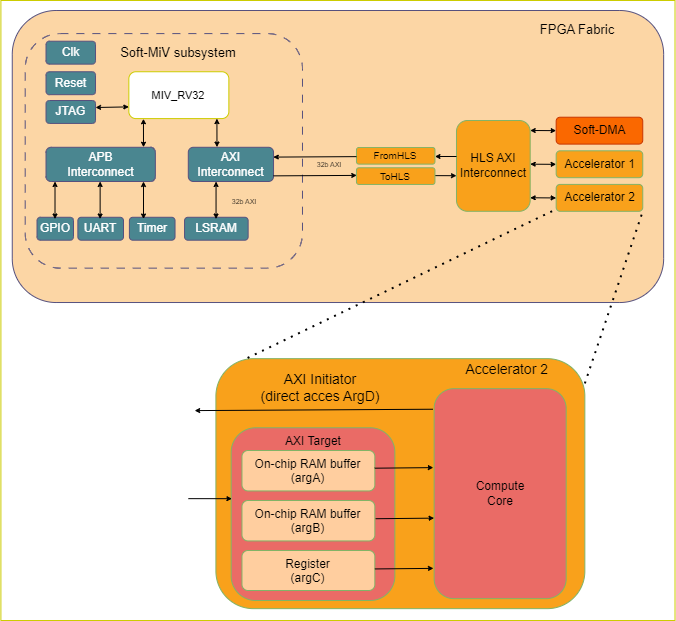3.5.3.6 MiV_RV32 Reference Design
(Ask a Question)The reference design for the MiV_RV32 is simpler compared to the Icicle Kit Reference design. The processor is implemented on the FPGA fabric and it runs baremetal, i.e. without an operating system. However, as can be seen on the following image, the processor has a few peripherals, such as General Purpose I/O, UART and a Timer module, which are connected via an Advanced Peripheral Bus (APB).

The MiV_RV32 also has an AXI interconnect which is connected to a LSRAM memory block to store instructions and data for the processor. Similar to the Icicle Kit Reference design, the SmartHLS-generated subsystem is also connected to this AXI interconnect. The architecture of the modules generated by SmartHLS is the same regardless of which reference design is used.
One difference compared to the Icicle Kit Refernce Design is the DMA. For the Icicle Kit Reference Design, SmartHLS uses the hardened DMA part of the MSS, but the MiV_RV Reference DesignSmartHLS uses a Soft-DMA implemented on the FPGA fabric . When a C++ function argument is marked as AXI target with the DMA option set to true (e.g. #pragma HLS interface argument(<argname>) type(axi_target) dma(true)) SmartHLS will automatically instantiate the soft-DMA engine, connect it to the HLS AXI interconnect and generate the driver DMA API for the CPU to use it. If the DMA option is later disabled (dma(flase)) then the Soft-DMA engine will be automatically removed.
Finally, the MiV_RV32 Reference Design also includes reset and clock circuitry, and most importantly, a JTAG module that allows the programming and debugging of the MiV_RV32 processor via OpenOCD using SoftConsole or the GNU Debugger (gdb) from the command-line.
